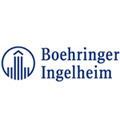 Boehringer Ingelheim Animal Health launches two new swine vaccines against Porcine Reproductive and Respiratory Syndrome (PRRS). Ingelvac PRRSFLEX® EU for piglets and ReproCyc® PRRS EU for breeding gilts and sows will be launched in most European countries in October 2015.
Boehringer Ingelheim Animal Health launches two new swine vaccines against Porcine Reproductive and Respiratory Syndrome (PRRS). Ingelvac PRRSFLEX® EU for piglets and ReproCyc® PRRS EU for breeding gilts and sows will be launched in most European countries in October 2015.
PRRS infects pigs around the globe causing reproductive failure in breeding stock and respiratory tract illness, slower growth and increased mortality in growing pigs. As a result, pigs suffer and die which causes economic damage to swine farmers worldwide. With Ingelvac PRRSFLEX® EU and ReproCyc® PRRS EU, they now have the opportunity to protect their whole herds against the negative impacts of PRRS.

"We are very confident that the simultaneous launch of our two new vaccines will significantly benefit swine farmers all over Europe", states Dr Joachim Hasenmaier, responsible for the Corporate Board Divisions Animal Health and Consumer Healthcare at Boehringer Ingelheim. "We have worked hard on developing an effective solution for sustainable whole herd PRRS control, and we are convinced that Ingelvac PRRSFLEX® EU and ReproCyc® PRRS EU are the perfect combination."
Ingelvac PRRSFLEX® EU reduces respiratory clinical signs and is the only piglet-specific PRRS vaccine on the European market. It can be used for the active immunization of healthy pigs from 17 days of age.
With ReproCyc® PRRS EU, breeding gilts and sows affected with the PRRS disease can be safely vaccinated in all stages of the reproductive cycle. This results in a reduction of PRRS-induced reproductive disorders such as an increased number of weak-born piglets or neonatal mortality. Vaccinated gilts and sows show a decreased transplacental virus transmission from infected females to piglets, one main reason why diseases can be perpetuated.
It is estimated that in 2014 approximately 70% of sows and piglets in Europe were PRRS positive. PRRS is associated with substantial costs for swine farmers all over the world, largely due to productivity losses as a result of poor reproductive performance and increased mortality, but also due to secondary infections and complications increasing the medication cost.
22 September 2015 - Boehringer Ingelheim Animal Health

